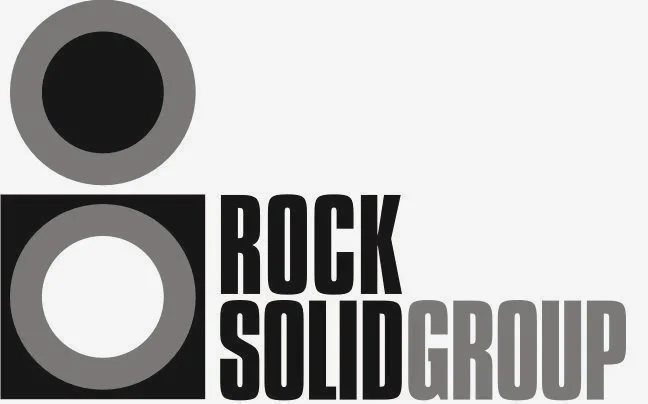AIM
™
Audit Information Management
INFRASTRUCTURE INSPECTION & ASSESSMENT PROGRAMME DEVELOPMENT
A condition assessment programme of an asset is far more involved than a simple scan of its wall. As part of any project RSG seeks information about the asset to ensure that the tools selected for the investigation are appropriate to suit environmental limitations of inspection sites as well as the level of detail sought about the infrastructure.
Understanding this information is critical to better define the types of flaws that are likely to be encountered. Such information can aid in defining the inspection scope.
RSG’s AIM™ system integrates high-level asset review of asset information such as Failure History and As-built information combined with a review of site sourced data integrated with local site knowledge and operational experience. Supported by RSG’s professional engineering expertise enhance by AI, a more holistic inspection programme identifying knowledge gaps and missing information is developed leading to superior and focused inspection programmes.
These advanced inspection programmes provide key information in determining Likelihood of Failure, Consequences of Failure together with Remaining Service Life.
The AIM™ system is versatile and can benefit various types of assets and pipe networks, particularly those requiring detailed and ongoing assessment for maintenance and risk management.
The tool creates the basic information and methodology for ongoing condition assessment of the asset.
WHAT CAN AIM™ DO FOR YOU?
Our RSG AIM™ system has been developed over many years of undertaking condition assessment to provide a client with:
A stand-alone current evaluation of a pressure pipe network (A system health check)
A stand-alone current evaluation of a gravity pipe network (A system health check)
As a tool to determine what investigation processes are needed and focus such investigation to areas determined by the audit data with recommendations for appropriate techniques
As a tool to identify replacement, remedial and repair works and where appropriate possible methodologies
Recommendations for on-going inspections and investigations
The system also creates the basic information and methodology for ongoing condition assessment of the asset.
EXISTING AVAILABLE INFORMATION, LOCAL SITE KNOWLEDGE SUPPORTED BY MINIMAL QUANTITATIVE SITE INVESTIGATION IS ALL THAT IS REQUIRED TO DEVELOP THE AUDIT.
Pipe Networks That Could Benefit From Such A Tool:
Municipal Water Supply Networks: These systems often cover large areas and serve many users, making efficient management crucial.
Sewage and Wastewater Systems: These networks are subject to various environmental and operational stresses, requiring regular monitoring.
Gas Distribution Networks: Safety is paramount in these systems, and predictive maintenance can prevent leaks and catastrophic failures.
Oil and Petrochemical Pipelines: These networks are typically spread over vast distances and can greatly benefit from AI-driven analysis and predictive maintenance.
Industrial Process Piping: Factories and plants use complex piping systems that need constant monitoring to ensure smooth operations.
District Heating Systems: These systems can be optimized for efficiency using AI tools to analyse and predict maintenance need
The AI tool’s ability to integrate different data types (quantitative, physical, environmental, operational, and observational) makes it particularly useful for comprehensive network analysis. This can lead to improved decision-making regarding maintenance, repairs, and upgrades, ultimately enhancing the reliability and longevity of the infrastructure.
Handling Different Pipe Materials
The RSG AIM™ system is designed to handle different pipe materials by incorporating material-specific properties into its analysis:
Ductile Iron and Cast Iron: The tool considers their susceptibility to corrosion and the impact of age on their integrity.
PVC and Plastic: Analyzes different stress responses and durability factors.
Steel: Assesses vulnerability to corrosion and fatigue.
Concrete: Evaluates propensity for cracking and structural integrity.
Copper: Assesses long-term durability and resistance to corrosion.
For each material, the system uses existing data on material behaviour, failure modes, and life expectancy to predict maintenance needs and potential failures. It also factors in environmental conditions, operational data, and physical inspections to provide a comprehensive analysis tailored to the specific characteristics of each pipe material.
Handling Joint Types and Connections
The RSG AIM™ system handles different joint types and connections by analyzing data specific to the joint’s characteristics and the materials involved:
Data Analysis: Identifies the type of joint, such as welded, flanged, or threaded connections, using a neural network trained on a large dataset.
Material Consideration: Factors in the material data to assess the joint’s integrity.
Environmental Impact: Considers environmental factors that could affect the joints, such as temperature changes, ground movement, or chemical exposure.
Operational Data: Uses operational data, such as pressure cycles and flow rates, to assess the stress on joints and predict potential failure points.
Physical Inspection Data: Incorporates observation data from surface inspections to identify issues at the joints, such as corrosion or leakage.
Non-Destructive Testing Data: Advanced analysis is supported by data obtained from BEM™ surveys on indiscriminate joints within steel or cast iron pipe networks.









